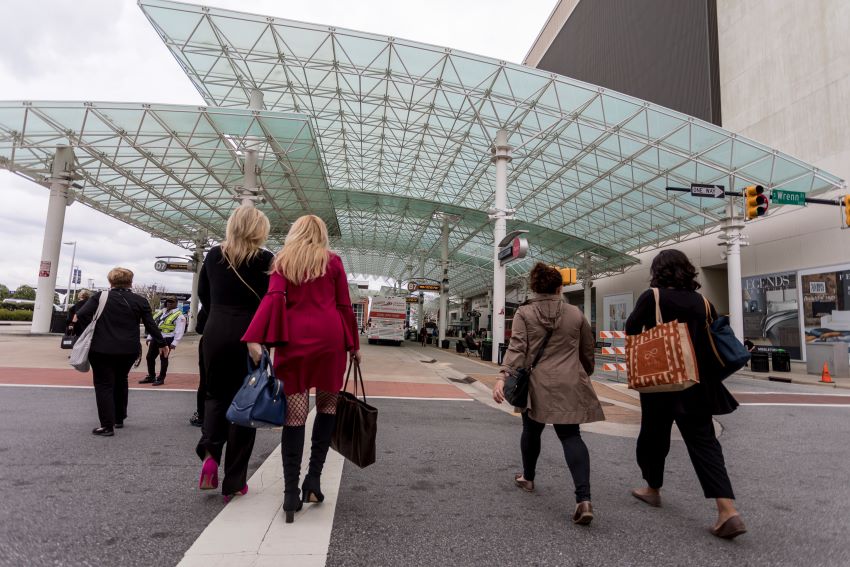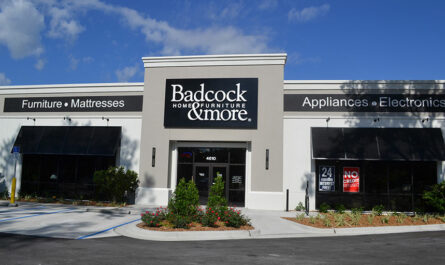A system handled by independent contractors since 2001 is now being handled in house to be able to gain efficiencies and make quicker decisions regarding improvements for the buyer experience
HIGH POINT – The High Point Market Authority is taking on what could be one of the biggest challenges in its 20-year history by overseeing the management of market transportation, a system previously handled by parking and transportation experts who ran everything from the shuttle services to area hotel bus routes.
This change occurred when the Market Authority decided not to renew its contract with The Car Park, an Idaho-based company that purchased McLaurin Parking in September 2017. McLaurin is the Raleigh, N.C.- based company that managed market transportation ever since the Market Authority was formed in 2001.
Officials believe the change will be seamless for buyers and other market guests, without them noticing anything but improvements to the way they navigate the downtown market area.

But that is not to say it’s been easy, particularly as officials have had just a few months to make the formal transition right after the June market, the last market The Car Park managed the transportation.
It’s a process that has involved planning and communication and training with personnel, including an additional 150 temporary market workers now under the market authority’s purview.
Many of these employees man hotel shuttles that take visitors to and from some 83 hotels in and outside High Point a total of six times a day, three in the morning and three in the evening. They also man the Red and Green Line shuttles that cover two separate routes in the market district and Go Anywhere vans that are on call to take visitors to and from wherever they need to be.
Perhaps with the exception of a few hotels being added to or taken off the routes — something that can happen each market — the shuttle routes will remain unchanged, including Red and Green Lines.
And while there may be some new drivers or personnel coming on board, most of these people are locals who have worked the markets for years and know their jobs well.
Given the complexity of the existing transportation system, Market Authority officials say they are not trying to recreate something they say is already running smoothly. But they do believe they can do a better job bringing the logistics in house.
“Just looking at where we were as a market and the resources we had in house, it just felt like the right decision to bring that in house and to really be able to take it to another level,” said Tammy C. Nagem, chief operating officer of the HPMA. “We felt we could make that change and had the resources to really concentrate on some of the things we were already doing. And it wasn’t that we felt like that company (The Car Park) couldn’t do that. It is that we have just so stayed engaged in the process throughout the years and just felt that we could do this ourselves.”

Terry Venable, HPMA vice president, operations and finance, said the change was about how the transportation system could be managed more efficiently and to the benefit of the people using it at market.
“This was not really done to save lots of money in our budget, but to maybe use our budget more efficiently,” he said, noting that decisions about improvements, including those involving the use of new technologies to improve the rider experience, would previously be based on what was or wasn’t covered in the contract. “So, it was always a challenge…This gives us more control and allows us to spend the money a little more efficiently.”
So, if officials now want to make an improvement “on the curb,” or right at market, they can now do so without having to make a special request to the outside contractor.
“The biggest benefit we see is that when we see an opportunity for improvement, now that can happen in a much more nimble way because we are able to react at a level that is not having to go through an additional layer,” Nagem said. “So now we don’t have to go and sell that to the contractor, who then has to incorporate that into their budget for the next year and the next. We are able to be a lot more nimble with those decisions. And maybe even make some of those decisions on the fly at market.”
One of the improvements that buyers will see as early as this market is the use of QR codes on Red and Green shuttle stop signage that buyers can snap with their camera to see how far a shuttle is from that stop. That means if there are three or four buses on the route, market goers will see where the closest one is relative to the stop.

“It will tell you if that shuttle is two minutes away, so it will give you real-time access to where those shuttles are,” Venable said, adding, “Sometimes people are there and think, “Am I waiting two minutes or am I waiting 12 minutes.” This tells them where things are.”
In addition, the Market Authority is using new software that through the use of real-time GPS data, will help with driver dispatch with the Go Anywhere van service. This is expected to help monitor which drivers are available and when, so they can be dispatched to a waiting customer more quickly.
Another change this market is that the Market Authority will manage the shuttles previously run by the Centers of High Point.
“They have run that van service for years and they made the decision not to continue that service,” Nagem said, adding that while the vans, shuttles and buses are leased, these are drivers now on the payroll of the Market Authority as are the other transportation staff hired at markets. “They are great drivers and they know the market area.”
From drivers and Park and Ride Lot attendants to hosts and hostesses on shuttles and people managing information booths and the transportation command center, the Market Authority market staff is rising from about 50 to as many as 200 market workers, most of whom are locals and who know their jobs well.
“We have always hired information booth staff and staff for The Point and for registration lobbies — we certainly have a staple of seasonal workers,” Nagem added. “Now it has just quadrupled.”
Other than improvements, officials say they hope that buyers don’t see any difference in the level of service.
“For the most part, I hope they don’t have a clue,” Venable said, adding, “We recognize that it is a big task and there will be some hiccups and issues that we will try to resolve, but that people see very few of those.”
So, will the changes cost the Market Authority more? That much remains to be seen, as it has had to invest in some new equipment such as phones and two-way radios and new signage throughout the market district.
Officials believe these investments will pay off over time as they improve the overall transportation experience.
Currently transportation represents about $1.8 million of the Market Authority budget for FY 21/22.
“I don’t think this first year we will see a lot of savings,” Nagem said. “The savings will come as we move down the road and as we are able to make some of those decisions on the curb…With some of those decisions we may be able to save some dollars or better yet, shift them.”
Tom Conley, president and CEO of the High Point Market Authority, said he believes that this market will be a seamless transition that will go “very, very well.”
In the future, he said, the focus will be on finding new technologies to help make the buyer’s experience better.
“We are trying to be more technology driven if we can afford it and it makes sense in order to drive our decision making,” he said.
Exhibitors also are eager to see how the shift works but believe the timing could be good, especially if this ends up being a more lightly attended market.
“It is going to be a lightly attended market, so if you want to start a new effort where you want to work out the logistical kinks, this is probably a really good place to start,” said Jamie Collins, executive vice president of upholstery and case goods resource Homelegance.
Yet Collins also believes the change can be positive in the long run as he thinks the Market Authority understands the needs of market guests.
“I think it makes sense because they understand the market enough to be able to control the logistics of the market,” he said. “This is not Vegas, but High Point is a complicated town when it comes to the show. You have people at the Market Authority that understand those nuances…Hopefully it is one more opportunity for the City of High Point and the market to be good hosts. If there is a way to improve the experience even just a little bit, it is worth it.”
Nagem agrees, while also noting that transportation is probably the last thing on most buyers’ minds while they are at market. They just want it to work.
“It was hard to realize that early in my career that people don’t come here to ride my buses,” she said looking back at her start with the Market Authority dating back to its beginnings. “People come here to buy furniture, to have an experience, to get education, to network and to find new product, all the things that this 12 million square feet brings to bear. If they can get to town, to move around, get their business done and get home and never think about transportation, then we have been successful. We hope that continues.”





